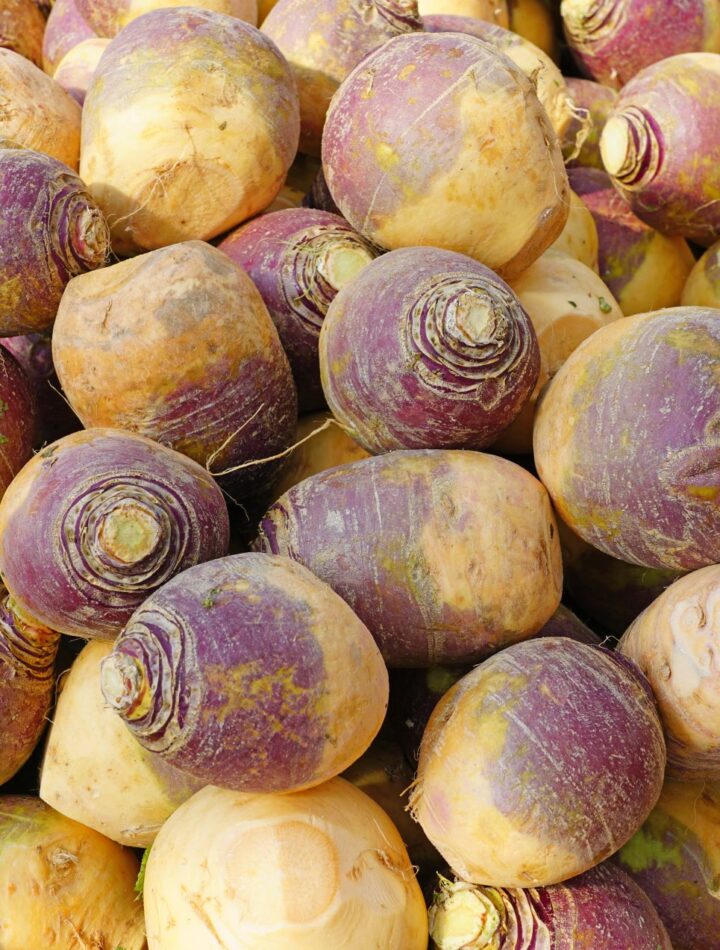I have had a lot of fun with different flavors of fillings of pasties at London Calling but there is something magical that happens inside a “Cornish” style pasty. And there is an art to ensuring the insides are in balance. Many things go into making this balance but it’s the rutabaga that creates the distinguishable aroma and undercurrent that holds it all together. The rutabaga is a root vegetable that is quite literally an ancient hybrid between a cabbage and a turnip. To the American, the rutabaga looks like a very large turnip. The British know the rutabaga as a “neep”, “swede” or “turnip”. When a rutabaga is cooked, it turns an intense orange color and it becomes slightly sweet. If you grew up eating cooked cabbage or turnips it’s the kind of sweet that occurs during the cooking process of these cruciferous vegetables too. I always know when the kitchen staff is cooking the Cornish pasty as the aroma is undeniably comforting.
Rutabagas are in season October through March. They are nutritious and full of fiber, vitamin C, potassium and calcium. You will find them in most well stocked grocery stores in produce next to the turnips. Americans tend to wax them so that they will last longer and to avoid damage in transit so if you use them you will have to peel them first. And head’s up, they are a beast to peel and cut. We started out dicing our own rutabagas at London Calling and broke two dicers! We thankfully found a source to peel and dice them for us. If you aren’t making pasties, rutabagas can also be boiled and mashed with butter, salt and pepper. But my favorite alternate use for the rutabaga is adding it to soups and stews. I have found that the rutabaga adds a bass note or that “missing something” in your homemade soup. If you have never tried the humble rutabaga (or a “Cornish” style pasty) I highly recommend adding it to your culinary toolbox! If you have, share with me how you use the rutabaga.

